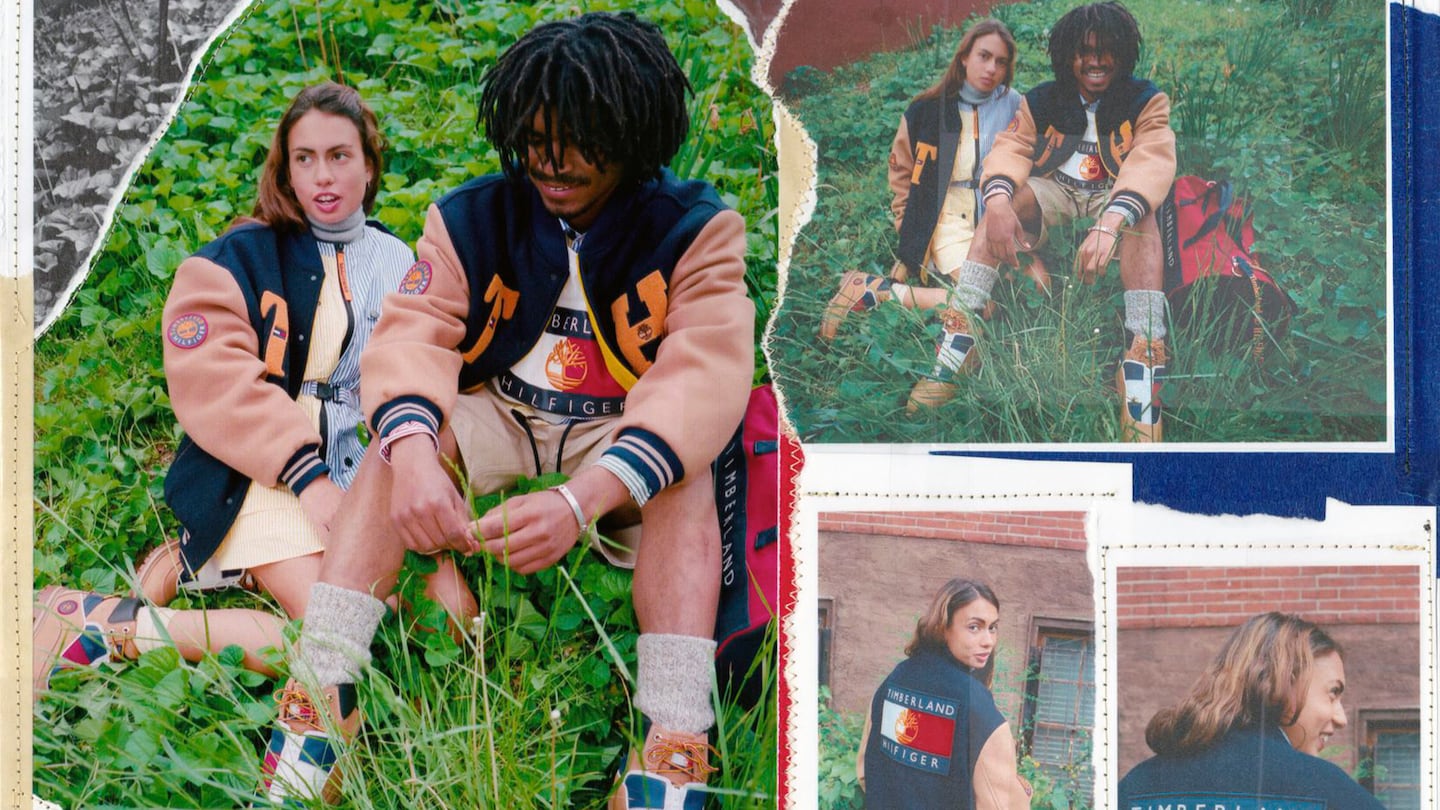
The Business of Fashion
Agenda-setting intelligence, analysis and advice for the global fashion community.

Agenda-setting intelligence, analysis and advice for the global fashion community.

Fashion loves collaborations. High-low tie-ups that bring luxury to the masses and strategic partnerships between niche brands and retail giants are a long-standing tactic to build buzz and generate sales.
But a new kind of collaboration — one with a sustainable twist — is gaining ground as companies respond to consumer demand and look to act on their commitments to reduce environmental harm with the products they make.
Allbirds and Adidas teamed up to investigate ways to reduce the carbon footprint of sneakers, launching a prototype in May that required just 2.94kg of CO2 equivalent to produce — 63 percent lower than Adidas’ personal best. Pangaia, the company that made a splash over the pandemic with its lockdown-appropriate monochrome loungewear made with materials like seaweed fibre, nettles and plant-based alternatives to feather down, is pivoting to a business-to-business model that will give other brands access to these innovations. And a new collaboration between Timberland and Tommy Hilfiger focuses, in part, on exploring ways to share the two brands’ separate efforts to reduce their environmental impact.
The collaboration was fuelled by an opportunity both companies saw to capitalise on the current nostalgia for trends and brands of the 1990s, a time when Tommy Hilfiger clothes and Timberland boots saw burgeoning success thanks to their popularity in hip-hop and streetwear culture. But a mutual interest in sustainability was also part of the plan.
ADVERTISEMENT
A first drop this month delves into the brands’ respective archives in a medley of clashing logos and colour palettes that uses better materials like recycled and organic cotton. The second is “about reimagining the future,” said Christopher Raeburn, Timberland’s global creative director. “How do we bring the absolute best of innovation around materials, circularity, and what the future is going to be for both brands?”
While sustainable capsule collections are often criticised as a way for brands to gain positive marketing buzz about their efforts while continuing to operate the rest of their business as usual, they can also serve as a way for brands to test the market for new innovations and share learnings. That in turn can expedite the wider uptake of innovations and practices that could reduce the industry’s environmental impact.
We didn’t want creative control; we wanted to share.
In the case of Tommy Hilfiger and Timberland’s new collaboration, both parties were transparent with each other about what they could bring to the table on the sustainability front, creating a mutually beneficial chance to “genuinely do something both brands wouldn’t have done independently and take the learnings and scale them,” said Raeburn.
That meant the two brands were open to sharing and adopting the complementary areas of sustainability they had been investing in over the years. For example, Timberland has committed to using materials with a net-positive environmental impact by 2030. The company has piloted and supported projects to source leather, rubber and organic cotton from farmers adopting regenerative, carbon-capturing practices, which were included in this collaboration.
Tommy Hilfiger, meanwhile, has built its sustainability strategy around inclusivity, low-waste production and repurposed fabrics, a “waste nothing and welcome all” approach, said Tommy Hilfiger, the brand’s eponymous founder and principal designer. The collaboration features genderless styles and translucent puffer jackets stuffed with offcuts from fabric used to make Tommy Hilfiger Ithaca shirts. Natural rice-based dyes — a first for both companies — are used in lieu of harsher chemicals to achieve the neutral hues of some of the outerwear pieces. That collaborative approach extended to the design, too.
“We didn’t want creative control; we wanted to share,” said Hilfiger. “When you put all of [their] details and all of our ideas and details into a blender, you really come up with something new and exciting that is fashionable, more relevant, utilitarian, street, preppy and cool.”
The drop model, streetwear’s favourite way to release product, was a deliberate sustainability play, too, said Hilfiger. Although drops can accelerate consumer demand for constant newness, he believes that creating scarcity, anticipation and desirability through limited runs has its merits. In addition to curbing overproduction, it plays into circular business models by retaining value for resale, he said.
Hilfiger and Raeburn said they will wait to see how the collaboration lands with consumers, but there are plans to scale the innovation and learnings to their wider operations. Hilfiger said his company is very interested in adopting regenerative materials.
ADVERTISEMENT
“We are going to continue to evolve it and make progress, hopefully setting an example for other companies to follow suit,” he said.
Related articles:
Scaling Up or Selling Out: How Can Sustainable Labels Credibly Collaborate with Big Brands?
Why Tommy Hilfiger Is Still Standing
High-Low Collaborations Democratised Fashion. But What Did They Do For the Designers?
Europe’s Parliament has signed off rules that will make brands more accountable for what happens in their supply chains, ban products made with forced labour and set new environmental standards for the design and disposal of products.
Fashion’s biggest sustainable cotton certifier said it found no evidence of non-compliance at farms covered by its standard, but acknowledged weaknesses in its monitoring approach.
As they move to protect their intellectual property, big brands are coming into conflict with a growing class of up-and-coming designers working with refashioned designer gear.
The industry needs to ditch its reliance on fossil-fuel-based materials like polyester in order to meet climate targets, according to a new report from Textile Exchange.